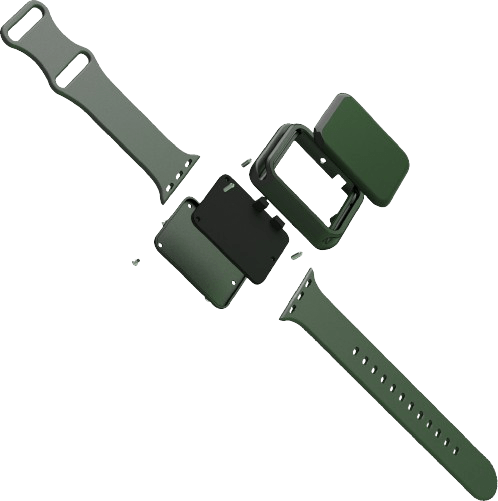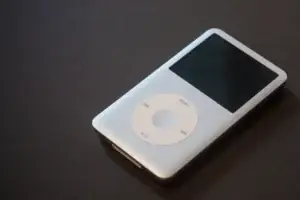We want to bring your ideas to life
CATALOG OF
PROTOTYPES
You can now access over 30 examples of prototypes designed and manufactured in our lab

Inventing Future Products That Don't Exist is a major obsession for most inventors and entrepreneurs. It’s no secret how important it is to stand out, which is why we have identified the most common techniques for inventing products that don't yet exist in the market.
Work environments and our day-to-day tasks are a key source of inspiration for identifying unresolved problems. Often, inventors face daily procedures and practices that motivate them to create products that don't exist in the market, substantially improving the ergonomics, efficiency, time, and resources used for various everyday activities.
We want to bring your ideas to life
You can now access over 30 examples of prototypes designed and manufactured in our lab

Over-engineering is a problem that many inventors and innovation companies face. The term over-engineering refers to novel solutions that aim to stand out by adding many functions to a single product. Often, the obsession with adding more options leads to losing sight of the primary problem intended to be solved in the market. This common mistake opens the opportunity for innovation by simplifying existing products to create future products that are much simpler and more balanced in terms of cost-benefit ratio.
The market and societies are not static; they transform with phenomena such as immigration or the democratization of certain popular customs. Precisely, these changes in social practices represent a great opportunity to create products that don't exist and are highly useful for improving the development of these new social practices. It is crucial to be very aware of new behaviors or transformations in society to create products that don't exist and could perfectly meet new needs.
Studying the development of new technologies that appear in the market or in patent records is the perfect trigger, or inspiration, to create useful products that don't exist in the market. Innovation in product development is a cumulative science, based on pre-existing elements that give rise to new, non-existent products. In fact, even though we value the exclusivity that patents grant to our inventions, the importance of patents for society lies precisely in the development of science and the creation of new useful products based on previously registered and documented advances.
To create future products that don't exist and that can succeed in the market, we don't necessarily have to talk about radical innovation. We don't have to think about a discovery that no one has ever thought of. Many innovative and novel products succeed in the market because they innovatively solve the persistent problems that existing products in the market present. Platforms like Amazon, Walmart, Aliexpress, and other marketplaces for innovative products are rich sources of information to understand the problems of the best-selling products and innovate to address these problems.
Are you ready to find out the estimated value of your Patent or Utility Model?
Now that you know the 5 most common techniques for creating future products that don't exist in the market, and I'm sure you have many innovative ideas in mind, I will share with you some examples of products that didn't exist and, with these techniques, have come to light.
How was the iPod created?

If we delve into the iPod as a product, it certainly has easily identifiable precedents. The real need was to make daily activities and commutes compatible while listening to music. In this sense, at the end of the 20th century, Guglielmo Marconi tested the first portable radio transmission, so by around 1900, portable radios began to democratize. Users could move around with their device, more or less heavy, more or less bulky, more or less optimized for autonomy. But, didn't this need get met?
The Sony company, evaluating the market behavior with portable devices, did not just settle for improving their autonomy and listening quality. They discovered that users, in addition to listening to music or content wherever they went, greatly desired to choose what to listen to at any given moment. To address this evolving need, they developed and led the market with their Walkman and Discman, inventions that came to light in 1979 and 1984 respectively, following the introduction of cassettes and later CDs, capable of storing content that would later be managed through the devices Sony democratized in the market.
Understanding user behavior over the years was a key ingredient. The need existed and was met, but not efficiently. Users had to carry multiple CDs to listen to what they really wanted at any given moment. Taking advantage of the emergence of the compressed mp3 format and the proliferation of the internet, Apple developed the iPod. A true revolution. A product that gave users the freedom to listen to many hours of music wherever they were, no longer just the 20 songs on a CD, but many hours, with a device that fit in a shirt pocket and was so light that it barely caused any fabric deformation.
So, do you really think that Apple created the need to sell their iPods?
I also confess that the last time I cast this uncovered bait, a student with clear entrepreneurial skills confidently stated:
“It wasn’t Jobs with the iPod, but who denies that Marconi created the need”
Before the transmission to portable radios, before the existence of batteries, even conventional radios, humans already had the need to express themselves, communicate, and be heard. The technological development surrounding this great need has allowed us today to have the opportunity to choose the information we consume and the format in which we do so.
No! Absolutely not. Marconi did not create the need, just as it makes no sense to insist on an idea that requires us to create a new need in the market. In the face of these kinds of reflections, unfortunately very common, we often encounter ideas about products that do not solve any problem and are therefore doomed to fail.
How was the Remarkable invented?

It would be a mistake to think that in all cases, when we develop products that aim to simplify a solution that excessively solves a problem, we give up part of the price users are willing to pay for the solution. Although in many cases simplification is achieved through a process that involves “decaffeinating” the product, the truth is that some entrepreneurs have managed to maintain, even maximize, economic performance by bringing their simplified solutions to market. The Remarkable is a clear example of this type of scenario.
Many users place special importance on the notes we take in meetings; their storage can become a real chaos. When studying or reviewing a book, we enjoy being able to make marks, create our own diagrams by overwriting texts, and link concepts with lines. These are techniques that help us capture and remember information better. The major manufacturers of mobile devices have studied and addressed this great need with what we all know as tablets and styluses. These smart pencils allow us to make our own marks on a device screen, which is also useful for sending emails, watching videos, and browsing the internet.
A few years ago, we witnessed the launch of the first version of the Remarkable, a device based on what we know today as electronic paper. Its founders have stripped away the multiple possibilities offered by a tablet and focused on achieving with their device the same sensation a user has when writing with a pen on paper.
They have achieved this so excellently that despite the connectivity limitations of their devices, giving up connectivity features and user interface functionalities, and rejecting internet browsing capabilities, they have managed to stay in the market with their electronic notebook at prices very similar to or even higher than those of high-end mobile electronic devices that aimed to meet such a need.
Therefore, inventors, our conclusion from examples like the Remarkable reaffirms that the most profitable innovation in the market is not a sum of meaningless functions to impress the user and overwhelm with so much technology. Quite the opposite. The key to success for inventing future products that don't exist is to understand the essence of the need and be truly disruptive in the way this specific need is addressed.
How Did Belts for the Elderly Come About?
Not only can demographic changes caused by migration reveal new opportunities for future products that don't exist in the market. Simply observing data related to the structure of society can lead to conclusions that may result in inventing future products that don't exist.
The analysis of the aging Spanish population and the overwhelming data supporting the hypotheses about the average age of the Spanish population in the coming years represent a very common source of inspiration among the inventors we have served during the early years of our laboratory's activity.
We have participated in the creation of electromechanical belts designed to deploy a kind of cushion to prevent hip fractures in the elderly when they suffer common accidents.
The growing wave of dependency among the elderly, driven by the aging of society itself, has also been the cornerstone for some inventors who have decided to innovate in non-invasive remote monitoring solutions. These solutions allow the elderly to carry out their daily lives without feeling that their privacy is being invaded, while keeping their loved ones informed about their daily activities and preparing these devices to generate alerts when the routine of the elderly is disrupted.
Growing as analysts of a society's demographics and our growth as global citizens open many doors to the vision of developing new products that don't exist, to respond to the growing business opportunities that arise from evident conclusions that become imperceptible to those who are not focused on studying such details.
How Were Drones Created?
At the end of the 19th century, specifically in 1916, there was talk of unmanned aerial vehicles (drones) “Aerial Target.” It was a military solution that, despite the difficulties in managing them in flight, was useful for training fighter pilots in shooting practices during flight.
Despite the great progress made with the “Aerial Target,” the first drones known in the market did not truly advance until the 1990s. The size and weight of electronic components limited flight capacity. Moreover, without democratized GPS technology, efficient management as we know it today in this type of aircraft was impossible. It seems like it was many years ago, but it wasn’t until the 1970s that GPS technology began to be democratized in the military world, and not until the 1990s that it could be used for solutions in other industries outside the military environment. Precisely, this democratization of GPS use and the high level of precision achieved today has been the main trigger for us to enjoy real spectacles led by unmanned aerial vehicles (drones) today.
How Was … Invented?
Yes! We have many examples of inventions that don't exist from our daily work as an invention laboratory that we could cite as examples of future products that don't exist. Given the importance we place on this technique for creating useful products that are not yet on the market, we believe a post explaining, step by step, how to innovate a product based on examples of successful products on Amazon would be useful. If you agree with this statement, make sure to stay tuned for our next post on information for inventors 🙂
The time to bring your ideas to life is now. We accompany you throughout the entire process: from idea to product.
San Juan Ingenieros, S. L, is the owner of the domain www.letsprototype.com, and in accordance with the General Data Protection Regulation (EU 1679/2016), we will process your data exclusively to handle your information request. You have the right to rectify or request the deletion of your data at any time via hello@letsprototype.com.

Industrial design and innovative product development company | Specialists in manufacturing working prototypes.